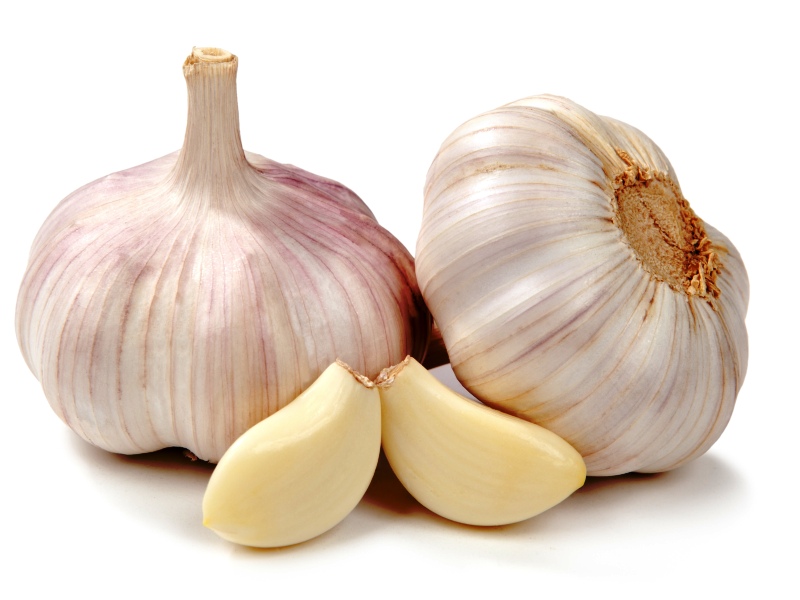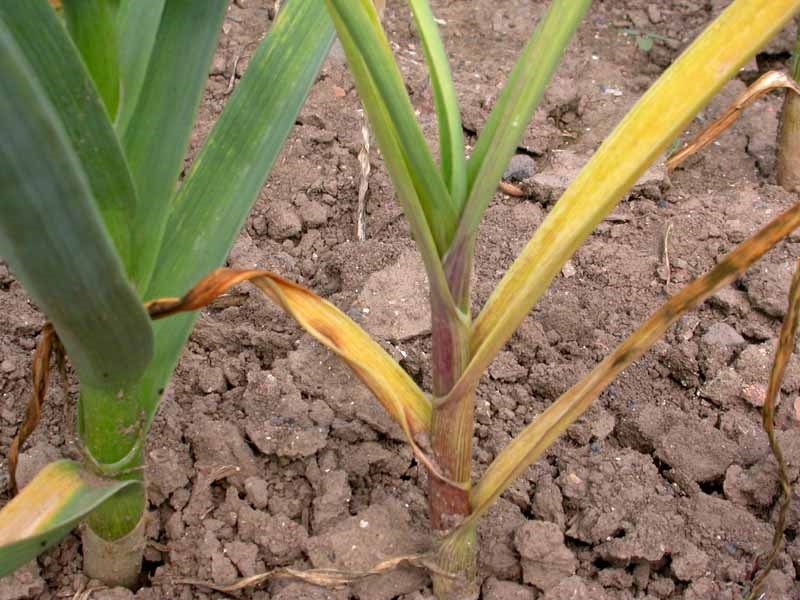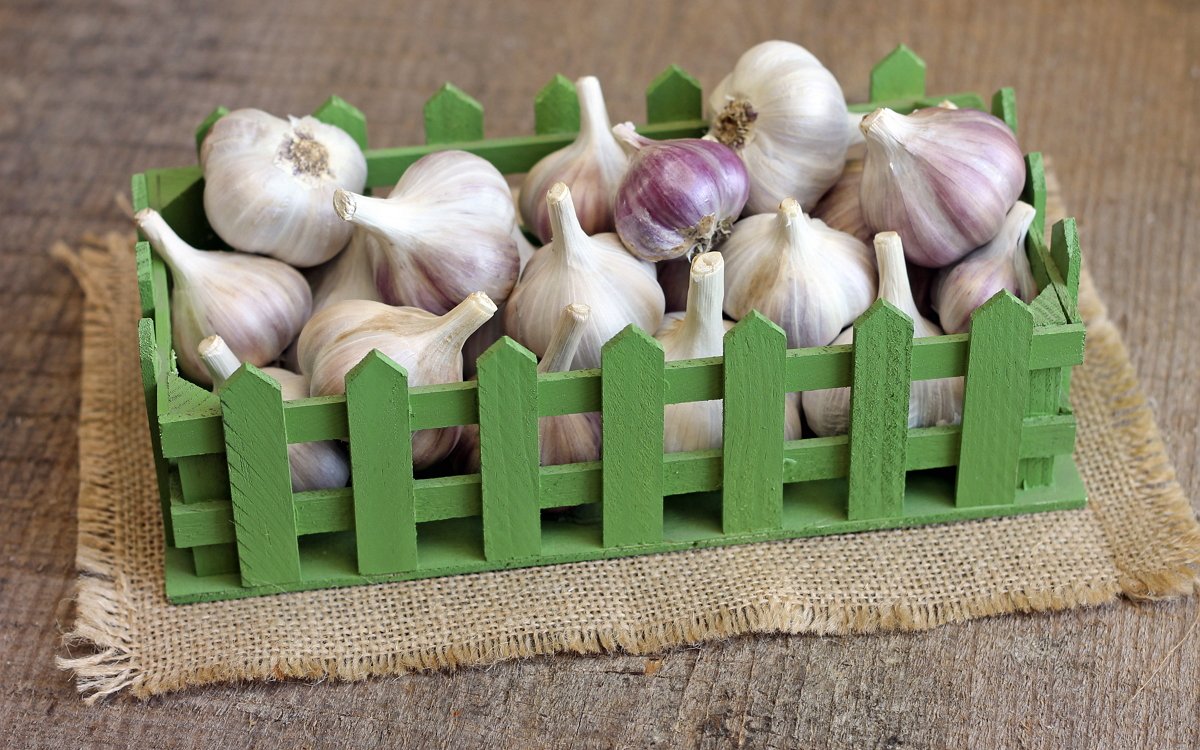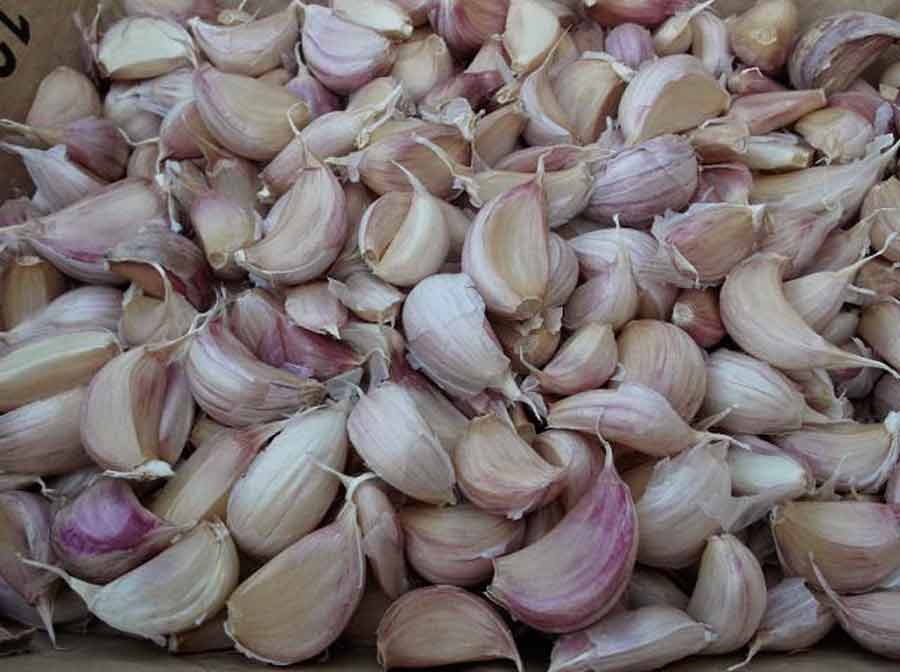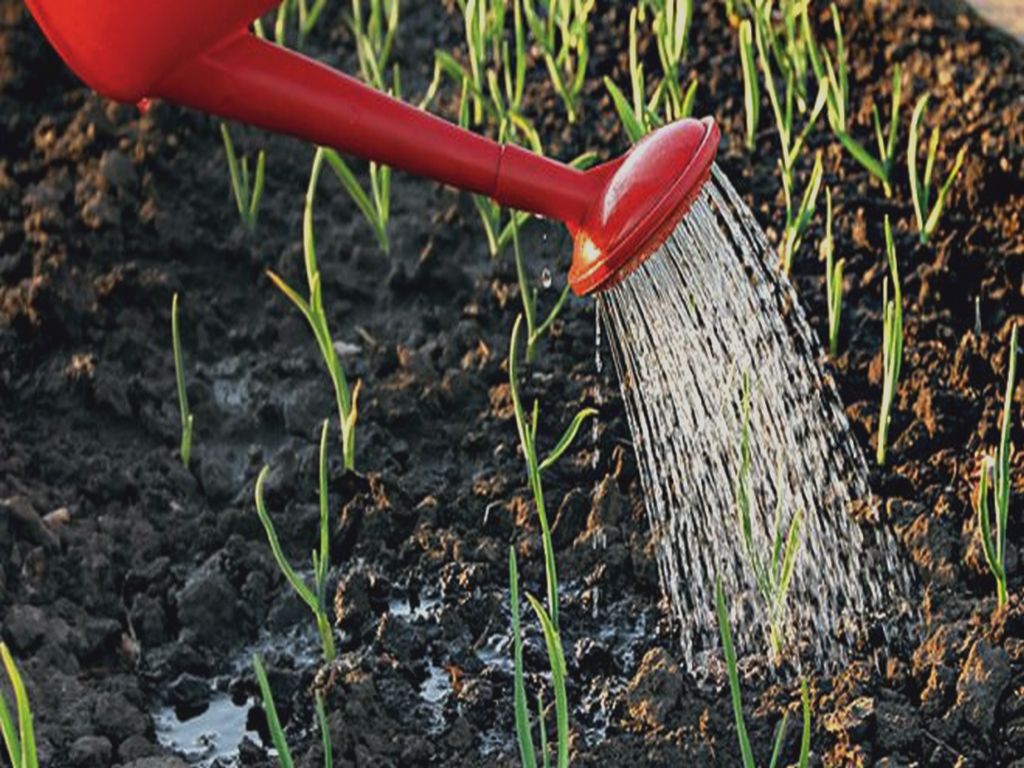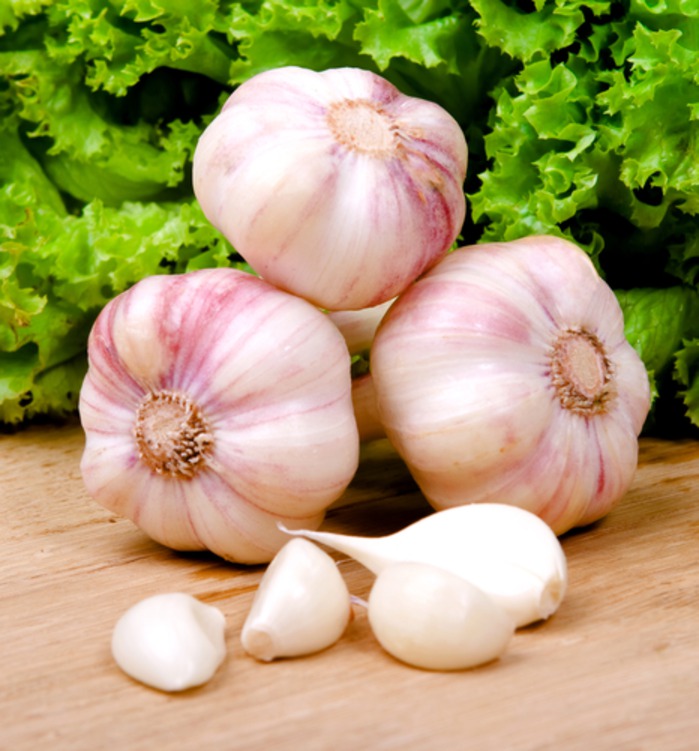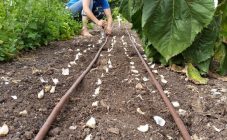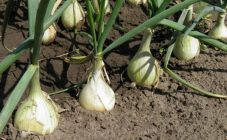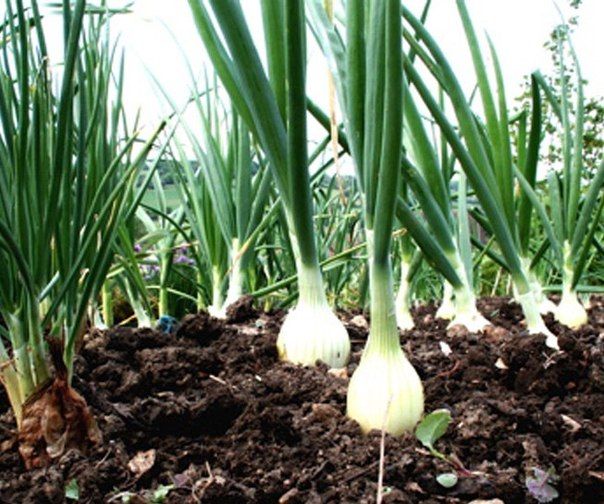Content:
Everyone knows the tremendous benefits of garlic. Even a small amount of this product, consumed per day, strengthens the immune system and protects against infection with viruses. That is why most gardeners are trying to plant it on their site. According to the planting dates, garlic is divided into spring and winter. Spring is planted in spring, winter - in autumn. Basically, planting garlic before winter is practiced, this method is most effective.
Psedimentand garlic in the fall before winter
To understand the period for planting before winter, you need to decide on the region where it is planned to grow by this method. Weather conditions directly affect how the vegetable takes root. There are the following guidelines for growing regions when it is worth planting winter garlic:
- middle lane, including the Moscow region - early October;
- southern areas - end of October;
- northern areas (Siberia, Ural) - end of September, landing in early October is also allowed.
The main weather reference point in order to understand when to plant winter garlic is the moment of night cold weather and warm above-zero temperatures during the day. Under this condition, the plant will take root to a depth of about 10 cm, which will give it the strength to successfully winter and not freeze out. But it is worth considering that the landing should be made one and a half months before the first manifestations of frost. The best daytime air temperature for working in the garden is 10 ° C.
You can often find gardeners' disputes about which is better: spring or winter. If planted in the spring, it is better stored, however, planting garlic in the fall, almost before winter, has a number of advantages:
- When planting in spring, it is very important to be on time, otherwise harvesting will be postponed to a later time. In the fall, there is no need to rush, and there is an opportunity to stretch the sowing process a little;
- Garlic planted in winter can withstand frost and severe cold later, and in spring it will not be affected by sudden temperature changes. But spring garlic, which has already sprout, can ruin a sudden cold snap;
- The heads used for planting in winter varieties are larger than in spring varieties. Large cloves of garlic will lead to the formation of large garlic heads, and spring planting material often shrinks by the time planting begins;
- Winter varieties, unlike spring varieties, have good immunity against characteristic diseases and insect pests;
- If planted in the winter, then care is practically not required - the soil during the summer season managed to collect water in sufficient quantities in order to allow the culture to successfully winter in the most severe frosts;
- The harvest begins much earlier in winter species, in early spring the cloves already begin to germinate. That is, in the summer, stores offer just such garlic. This is also true for those who grow vegetables for sale;
- The harvest itself is more abundant in winter garlic, in comparison with spring garlic.
The most important moment of sowing in winter is choosing the timing for planting. If this is done too early, the plant will grow, its root system will actively develop, and even fresh shoots may sprout. This will have a negative effect during the first frost. If you are late with planting, then the cloves will not have time to develop the root system, and the crops will freeze. Therefore, it is so important to know how to properly plant garlic before winter.
This deficiency in winter garlic is addressed by determining when to plant winter garlic in order to obtain a bountiful harvest and prevent crop death. Many gardeners use the lunar calendar to clarify the timing of planting various vegetables. There is, of course, information about garlic.
You also need to know exactly when it is time to collect winter garlic planted in the fall, because the duration of its storage depends on this. Harvesting begins in mid-July and ends in early August.
How to plant garlic for the winter
The secret to large yields is to choose the right planting material and sow it. For a start, large cloves are chosen so that the garlic itself will also grow large as a result. Small heads will grow from small planting material. After sorting by size, the teeth for sowing are inspected: they should be free of visible damage with an intact upper shell. Naturally, rot and mold on the planting material is unacceptable.
Each garlic clove must undergo preliminary preparation:
- Initially, large heads are selected for separation, properly dried. The denticles are separated, while it is important not to damage their outer shell and the place where the roots will grow;
- All planting material is very carefully sorted - if you miss a sick specimen, then not only will it not yield a crop, but it can also destroy all crops;
- Processing is carried out by soaking in a saline solution. It is usually prepared independently as follows: no more than 3 tablespoons of ordinary salt is dissolved in 5 liters of water. Seedlings are processed for no more than 10 minutes;
- Disinfection of heads is an obligatory stage of preparation. It is carried out by soaking in a solution of copper sulfate. For its preparation, 1 tbsp is poured into a bucket of water. spoon of this powder. The cloves are kept there for about 2 minutes. Copper sulfate can be replaced with potassium permanganate or phytosporin M. They also effectively disinfect, but the soaking time must be increased to 30 minutes.
In small areas, compaction is practiced when planting various crops. Vegetables that can coexist well are planted in the same garden bed. This saves space and increases yields, because some crops have a positive effect on each other's growth, for example, scaring off pests. Novice summer residents are wondering how to effectively compact garlic in the beds.
Dill is the best crop for compacting garlic plantings. After planting the cloves in the garden, a little later in time, you need to scatter the dill seeds in the same place so that it sprouts along with the garlic when spring comes. Then you should dig a little with a rake.
The crops will be able to germinate simultaneously next year and coexist well with each other. With such sowing, sometimes difficulties with weeding arise. Shoot sprouting will only remove large weeds. But then the garlic in this neighborhood will grow strong and will ripen better, giving out large heads.
The question of when the garlic planted before winter springs up cannot be answered unequivocally. This is usually early spring, but the soil needs to warm up to 10 ° C for the plant to grow.
The main mistakes that gardeners make when planting garlic are:
- You can buy the wrong type of garlic or mixed seed. If you plant the wrong species in the winter, then, for obvious reasons, there will be no harvest. Often the sellers themselves confuse varieties, so you need to make a purchase only in a trusted store. It is important to remember that winter garlic can sprout an arrow, but spring garlic does not throw them away;
- The cloves are planted immediately after digging the soil.This cannot be done, because the fertilizing introduced there takes time to take effect and enrich the soil with various useful substances for plants. In addition, the earth will gradually settle, burying the cloves deeper, which will affect their germination;
- Sowing too early. The grown shoots will die from frost, thereby weakening the whole plant;
- The selection of seedlings was not carried out. It is not recommended to plant large cloves mixed with small ones - large, growing, will oppress the weaker ones;
- Removing the shell. Some gardeners insist on removing the coat from the cloves, arguing that it interferes with root development. In fact, the development of the root system is hampered by the remnants of the old crust, and if you remove the film, then the seedling will simply rot;
- Arrows are not clipped. Winter garlic in the spring will release an arrow, and all the power of the head will go into the formation of bulbs on it. Arrows are to be removed as soon as they appear.
Garlic planting scheme
The place for planting garlic is chosen open and well-lit. It is important that other plantings, especially trees, do not shade it. Slightly raised beds are ideal. If the vegetable is placed in a lowland, then during the spring melting of snow, it may flood and, accordingly, die. It is better to choose a place where a large amount of snow accumulates - this is a natural insulation. If there is not enough snow, then the crop will freeze. Further in the article, it is considered what to do if the garlic is still frozen, and there is a risk of being left without this product.
It is recommended to follow exactly the scheme for planting winter garlic for maximum results. It is planted in rows with a distance of about 25-30 cm between them.The correct spacing between the teeth should be 10 cm.
The depth of the seed buried in the ground is about 10 cm. When located closer to the surface, they can freeze out. In harsh conditions, it is allowed to cover the crop area with straw or paws of fir trees, but in the spring it is necessary to remove the shelter.
Furrows should run strictly parallel. It is important to ensure that the clove is upright, with the bottom below. The effectiveness of such plantings is beyond doubt and has been repeatedly tested by experienced gardeners.
How to fertilize garlic when planting for the winter
Garlic is recommended to be planted after green manure. Tomatoes, legumes, or pumpkin are good predecessors. You can not plant this crop after carrots, potatoes, or the very same garlic. The soil should be loose, well fertilized, with a neutral acidity index. Garlic will not grow on clay and acidic soils. On sandy substrates, it can yield crops, but more careful care is needed.
About three weeks before sowing, they begin to prepare the garden. The soil must be dug up to 30 cm, removing excess plants and stones. The composition of the dressings depends on the type of soil:
- loamy and sandy - mineral fertilizers: dolomite flour, superphosphate; organic matter: humus or compost;
- clayey - as fertilizer, a bucket of peat is applied per 1 square meter;
- peat - add loamy soil.
After digging, the ridge is harrowed. Treatment with a solution of copper sulfate will not be superfluous. After all the procedures, the bed is covered until the very planting.
What to do if the garlic is frozen
Most often this happens for the following reasons:
- planted too early - not only rooted, but also let the leaves grow;
- technically incorrect planting - it is not sown in holes, but simply stuck into the ground;
- wrong landing site - a bed in the shade, a place with little snow in winter;
- the crops were not covered for the winter - a layer of compost or tops will protect the garlic.
Gardeners are wondering: if the garlic is frozen out, what to do in such a situation.So, if the winter garlic is still frozen, then planting spring garlic will be the way out. They begin to plant it in early May. Growing winter garlic in spring is also allowed, but the bulbs of such plants will not tie up - only greens. True, experienced gardeners say that when sowing in early April, there is a chance to get a harvest. However, such garlic will not be stored for long.
Correct agricultural technology in any case will allow you to easily grow a large crop for yourself or for sale. Moreover, it is known what to do if the winter garlic is still frozen.
